At Fitbit’s annual end of summer announcement event, the company did not announce a Wear OS device (of any type). Though, they did (re)-commit to building one sometime in the future. Instead, they announced the Charge 5. The company says that the Charge devices make up 1 in 3 Fitbit users today, some 40 million Charge devices in total. And the new Charge 5 is very clearly the most graphically advanced unit to date. Gone is the monochrome display, in is a brilliant AMOLED screen instead.
Of course, AMOLED or similar screens on wearable bands and activity trackers is hardly new. Samsung did it 7 years ago. However, most companies have sacrificed battery life for brilliance. But this time around Fitbit says your Charge 5 will continue to get the roughly 7 days of battery life that the Charge 4 gets. Alongside that new screen is ECG functionality as well as stress detection. Essentially we’re seeing the Fitbit Sense from a year ago, squished into the body of a wearable band.
However, perhaps the most interesting feature is Fitbit’s new Daily Readiness Score. This score is a combination of three components, including your daily activity level, accumulated sleep, and heart rate variability data. While I’ll dive into this in more detail down below, this seems fairly targeted at a more consumer-friendly version of what Whoop is attempting to do with their Recovery Score (or Garmin via FirstBeat, with Body Battery).
Finally, note that this is *NOT* a review. That’ll come down the road once the unit nears shipping (timelines in the next section). Instead, I just want to briefly cover some of the newness here before I go hands-on.
What’s New:
Here’s the simplified round-up of new features or changes coming to the Fitbit Charge 5:
– New AMOLED color touchscreen display
– New display is 2X brighter than Charge 4 display
– Has an always-on display mode
– Adds Daily Readiness score (requires Fitbit Premium)
– Adds workout & recovery recommendations based on daily readiness score
– Adds high and low heart rate notifications (outside of workouts)
– Adds EDA (Electrodermal Activity) measurement for stress tracking
– Adds ECG sensors/functionality (not available at launch)
– Adding AFIB detection, PDF export for doctors (not available at launch)
– Adding Snoring & Sleep Noise Detection Tracking (later this year)
– Battery life claimed at 7 days
– Still has built-in GPS workout tracking
– Still has all the usual Fitbit activity tracking (steps/sleep/24×7 HR/etc)
– Still has sleep score, sleep stages, smart wake alarm (and Premium subscription adds more depth in metrics)
– Price is $179 USD (includes 6-months membership to Fitbit Premium)
– 10% thinner than Charge 4
Of course, some of these items above don’t fully cover the extent of the underlying features, for example the Daily Readiness score is a culmination of multiple features, including taking HRV measurement. Which, we’ll dive into in the next section.
Finally, as for availability of the Charge 5 – that’s a bit fuzzier. Fitbit has only stated “This Fall”, which technically means on/after September 21st. I asked for clarification if that was the intent there. Historically speaking Fitbit actually announces their products a week later (closer to Aug 31st or September 1st), and then we usually see them available mid to late September.
Also historically speaking, for the last few years Fitbit launches mostly incomplete products in terms of features advertised. And we see that same thing here as well. Features like the ECG, Snore Tracking, and Noise detection/tracking won’t be available at launch – only starting sometime later this year. While Fitbit did a reasonably good job of hitting their stated timelines last year for leftover features, that hasn’t been the case in previous years. Point being, if those specific not-at-launch features are critical to you near-term, you might want to hold out a bit until they’re available.
With that, let’s dive into a few details.
The Daily Readiness Score:
Arguably, the most interesting thing in the Charge 5 isn’t the screen. Sure, that’ll probably be pretty and all that. But we’ve had pretty screens in wearables for years. And don’t worry, in my full review I’ll test things like visibility in bright sunlight, as the Charge 4 screen was useless on a sunny day (Fitbit says this is 2x brighter than the Charge 4). And I’ll dive into GPS & heart rate accuracy, and all the other things you expect.
But what caught my attention in the Charge 5 is a new ‘Daily Readiness Score’, which Fitbit is only making available for Fitbit Premium subscribers. This score is aimed at telling you whether or not you’re ready to tackle another workout, whether that workout should be harder, or whether you should take more recovery. It does this using a slew of data the watch is collecting in three core categories:
Part 1 – Activity Levels: It’s looking at your heart rate values over the course of the day, including both workouts and non-workouts, and figuring out how much effort you put out on that day in terms of fitness fatigue.
Part 2 – Sleep: The platform looks at not just your last night’s sleep, but weighs it with your last three nights’ sleep. Meaning if you’ve had a so-so night of sleep last night, but two solid nights prior, you’ll get more leniency than if you had three back to back to back crappy nights of sleep.
Part 3 – HRV Score: The unit measures your HRV score during your deep sleep. Historically speaking Fitbit has done HRV measurement over the course of the night, though I’ve asked for clarity on exactly which portions of the night they calculate the score from (more on why in a second).
With all three of these things put together, you’ll get a ‘Readiness Score’ that’s from 0 to 100 each day. The higher the score, the more ‘ready’ you are. The lower the score, the more recovery you need:
From the Readiness Score tab you can see the three components that make up the score (Activity, Seep, HRV). You can also see your daily readiness scores over time, to see how things are trending.
However, Fitbit then goes a step further, and gives one of two recommendations: An Active Zone Minutes target, or a Recovery target. Active Zone Minutes are what Fitbit refers to as elevated heart rate activities (so ideally a workout, but hey, technically some vigorous horizontal shuffling would work too). Whereas a Recovery target would indicate you should take things a bit more chill today.
If you receive a good score that warrants Active Zone minutes, you’ll get recommendations for specific workouts to fill that quota. These can actually come from Fitbit’s library of some 200 audio and video workouts:
Whereas if you receive a low score, then you’ll get recommended workouts including recovery-focused yoga or stretching (or other non-intense things):
Fitbit says that “Daily Readiness will be available in the Fitbit app for Premium members with Fitbit Sense, Versa 3, Versa 2, Charge 5, Luxe and Inspire 2
devices” – in other words, it’s not just the Fitbit Charge 5 that’s getting it.
So, a few thoughts on this, again, at a high level until I start digging into it hands-on:
A) Pulling it together: One of the biggest critiques I made of last year’s Fitbit Sense in my review, was that it provides all sorts of sensor data, but absolutely zero meaningful recommendations on what to do with that data. It’s a criticism that almost every reviewer echoed. It was as if Fitbit just threw all these health metrics at the wall and said “There, now you have it!”. Thus, this Daily Readiness Score seems targeted at fixing exactly that, and doing so in what is a typical easy to understand Fitbit way. That’s a huge shift.
B) Clearly Aimed at Whoop: The most obvious takeaway here is that this score directly targets Whoop’s ‘Recovery Score’. Whoop essentially has two core metrics (daily numbers it gives you): Strain & Recovery. Strain is basically your heart-rate-driven training load. And Recovery is how recovered you are. But in Whoop’s case, Recovery is based on a single 5-minute HRV value taken during your last deep sleep phase. And as any Whoop user can tell you, that’s fraught with potential for error. Having so much reliance on a single HRV value from a notoriously poor optical HR sensor means you can have stunning sleep, but if the couple minutes it decides to take the reading are wonky, then you’ll get a bad score. Also, Whoop *ONLY* looks at the HRV score for recovery. It doesn’t care what you did that day, or the previous night’s sleep. Fitbit’s approach seems to address all those issues (on paper, anyway).
C) Stress Inclusion? It doesn’t appear as though stress is accounted for directly within the Daily Readiness Score. No part of any of the documents or presentations that I received calls out inclusion of that within Daily Readiness. While a high heart rate can be seen from stress, that’s definitely not a guarantee at all. Keeping in mind that Fitbit put their EDA sensor inside the Charge 5 (from last year’s Sense), which is used for stress detection. So it’ll be interesting to get more clarity if that’s contributing anywhere here.
Now of course, there are other players doing semi-similar things. Just with less clarity. Many people try and compare Garmin’s Body Battery to Whoop’s platform. And at a high level you can do that, but both platforms are considerably different in how they surface the data to you. I’ve long said that Whoop’s best asset is the way it visualizes and surfaces the data in their app. It’s really damn good at that. Unfortunately, their optical sensor is really damn bad, and thus, all of the insights surfaced to you are largely flawed (again, merely look at the 341+ comments on my Whoop review to see that’s the case for virtually everyone).
Whereas Garmin has a far more accurate optical HR sensor, and more accurately breaks down training load on a day-by-day basis – as well as the impact of that on your recovery. But Garmin’s app and platform doesn’t prioritize any of that in even remotely the same way as Whoop’s. For example, Garmin will give you a recovery time after a workout (based on hours). Then you have training load (on both a per workout basis, and weekly load). Then you have Body Battery (which is essentially a daily score, but impacted by your activity, stress, and sleep). The problem is, that Recovery Hours and Body Battery can and do conflict, because they’re somewhat different things. And none of these are pulled together in anything like Whoop’s single-page dashboards. Or for that matter, Fitbit’s new dashboard.
(Whoop’s daily dashboard at left, Garmin’s ‘My Day’ dashboard at right)
So while Garmin’s underlying data metrics are far more advanced than Whoop’s, and its individual component recommendations more detailed than Whoop’s, they’re spread amongst half a dozen data pages and menus deep in their app or watch. They stop short of really pulling it all together, unless you get an exceptionally low sleep score, which then triggers a no-workout warning.
Of course, Fitbit distills a lot of this down to the single score with its three components. You won’t get the depth of visibility into contributions that you would from Garmin or Whoop. But it’s still equally as actionable: Are you going to workout hard today, or are you going to recover today? And to what extent on either? At the one-pager level, it’s the same as Whoop. Just delivered in prettier colors (and with less reliance on a single sensor point).
Now, as always, we’ll have to see how things turn out in real-life. But we know this underlying optical HR sensor. After all, the Daily Readiness Score works on the Fitbit Sense and Fitbit Versa, and as a result, we’ve got a pretty good idea how the sensor works, how it performs, and perhaps most notably: The fact that it’s 100% of the score in Fitbit’s case. That’s because Fitbit is looking at sleep/sleep quality, which isn’t reliant on the heart rate sensor. As a result, they’re more diversified in their approach.
In any case – it’s all things for my full review down the line.
Wrap-Up:
There’s no doubt that the Charge 5 is a substantially different piece of hardware than the Charge 4 – one only need to visibly look at that to see it. And how all those things perform will be important. If we look back at last year, the other main criticism that reviewers levied against Fitbit was that at launch it was just buggy. Given this is such a substantial platform shift (new display type) for Fitbit, it’ll be interesting to see if it’s a more polished experience. Ideally, they’re using much of the same code from the Fitbit Versa 3 & Sense, just with a different display form factor.
But beyond that, I’m more curious about the Daily Readiness Score, and specifically, how each of those three components impact it. And then from there, how it compares with both other units on the market, but also just the reality of how I feel. For all the numbers in the world, most times people know whether they feel recovered or not. And they tend to know whether they’re ready for a hard workout. Having a device that either matches that, or can provide a good and accurate data-based reason why you shouldn’t trust your instincts is useful. And those are all things I’ll be digging into in my full in-depth review.
With that – thanks for reading!
(Nitpickers Corner: Yes, Polar has many recovery and load features. And Suunto has a chunk too. And Polar’s workout recommendation bits is quite good in this area. But the overwhelming majority of interest I see is people asking for clarity between what Whoop & Garmin are doing with respect to load/recovery, and thus for today’s post, to keep it from getting crazy long, I’m just focusing on this trio.)
FOUND THIS POST USEFUL? SUPPORT THE SITE!
Hopefully, you found this post useful. The website is really a labor of love, so please consider becoming a DC RAINMAKER Supporter. This gets you an ad-free experience, and access to our (mostly) bi-monthly behind-the-scenes video series of “Shed Talkin’”.
Support DCRainMaker - Shop on Amazon
Otherwise, perhaps consider using the below link if shopping on Amazon. As an Amazon Associate, I earn from qualifying purchases. It doesn’t cost you anything extra, but your purchases help support this website a lot. It could simply be buying toilet paper, or this pizza oven we use and love.


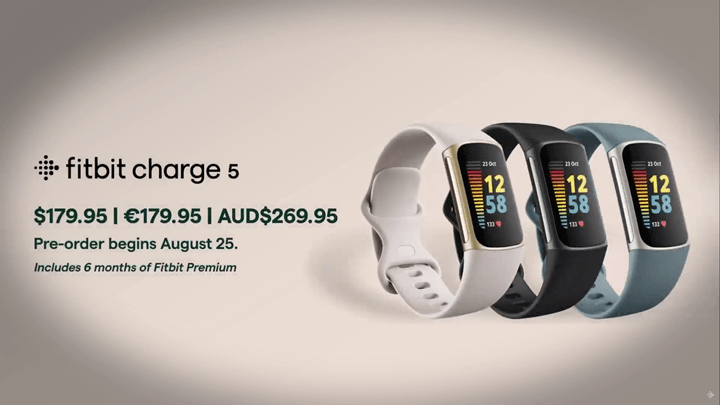
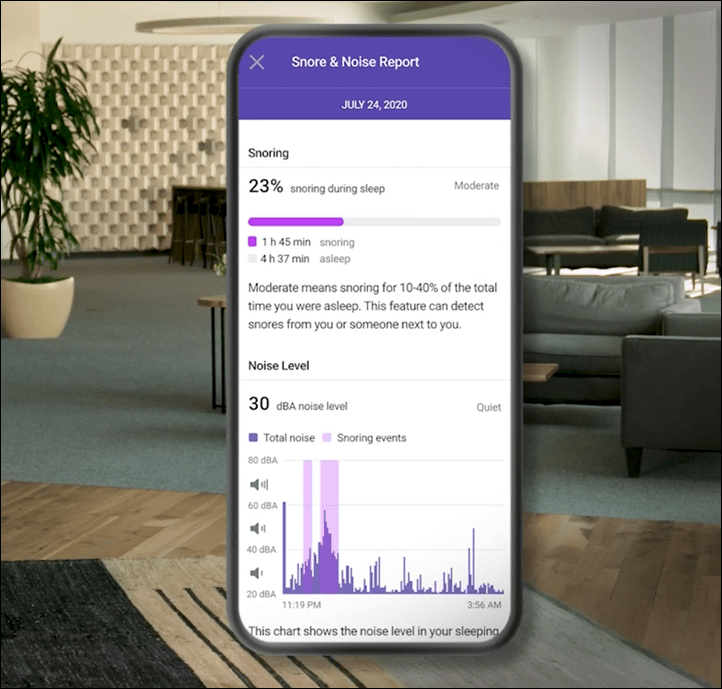
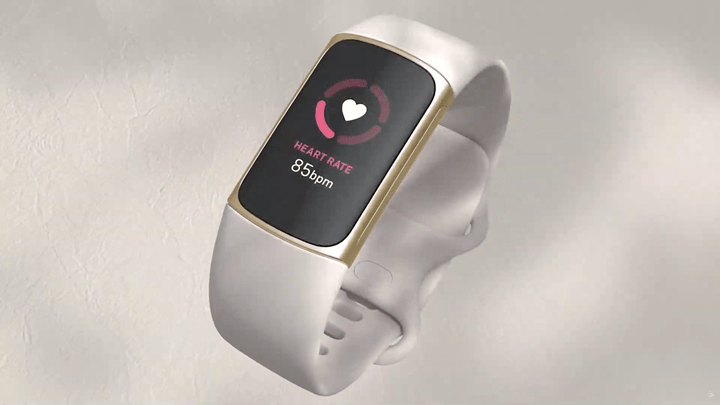
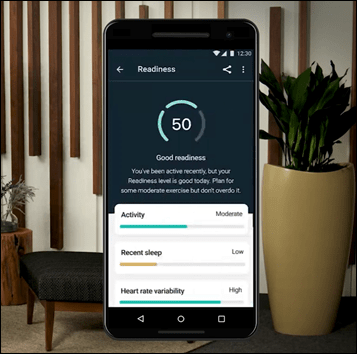
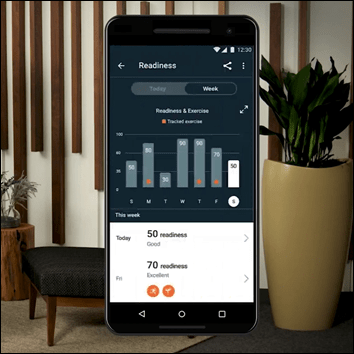
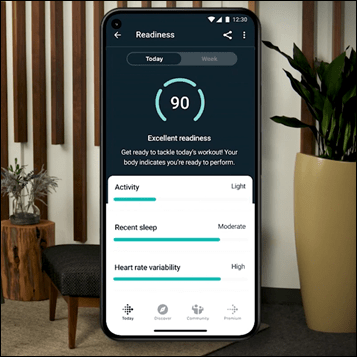

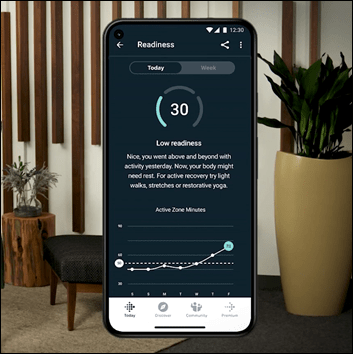
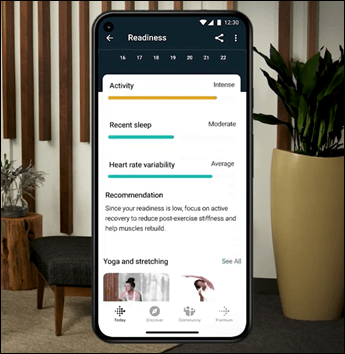
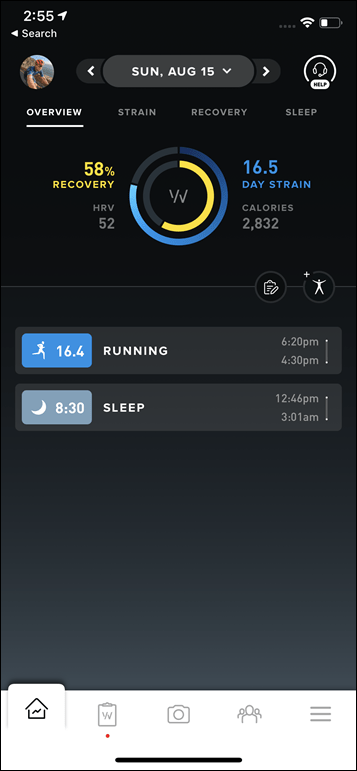
![clip_image001[6] clip_image001[6]](https://media.dcrainmaker.com/images/2021/08/clip_image0016_thumb.png)

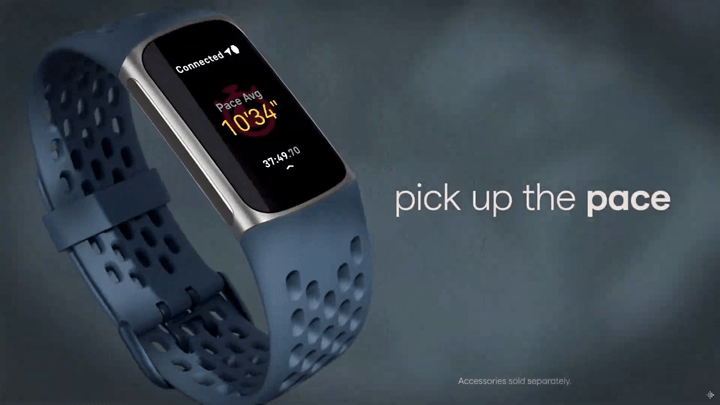





















At the end of the day, longevity is the thing I wonder about the most. I already have a Charge 4, but it is sitting in a drawer – the display was slowly dying and got to the point where it was so dim as to be unusable. If it weren’t for that, I would still be wearing the thing.
My wife has gone through several fitness trackers (varying brands), and those have died early deaths as well. Sometimes an inability to charge the battery. Sometimes something else – I don’t remember.
I might *sort* of be interested in a Charge 5, but if it has issues, I might take a pass on that as well.
I love the simplicity and interface of Fitbits, and they’re all the tracking functionality that 90% of the world needs. But the thin tracker form factor just looks so outdated at this point. Every time seeing a Fitbit in the wild I do a double take.
Not sure I’d want to be whoop. The strain & recovery angles are pretty copyable — before getting into the sensor accuracy. $30/month to use the darn thing is steeeep.
If I were whoop I’d keep investing in athlete endorsements for user acquisition. Pay the Katie Ledecky’s of the world to wear in every interview.
Interesting comment about athlete endorsement. I was catching up on the Battle Royale earlier, and I noticed Lionel Sanders’ conspicuous whoop tan line, but the whoop nowhere to be seen. (The garmin on his other wrist was though).
Whoop pays an incredible number of athletes in numerous verticals. It’s astounding actually.
But more important to that is their affiliate referral system, which you’ll see on almost every review and most every YouTube video. Obviously, I use affiliate links here across the site – so I don’t have a problem with that per se.
However, one key difference is I don’t do *ANY* direct to manufacturer affiliate linkage. Only via 3rd parties (e.g. Amazon or REI). As thus, I don’t really care about things like commission rate differences or such. It’s exceptionally rare (virtually impossible) to find a critical Whoop review, and virtually none of the ones I see with affiliate links ever dig into the actual data (the thing that underpins everything in Whoop).
Again, as I’ve said many times – I think Whoop has huge potential with three changes:
A) Ability to pair to a different HR sensors for workouts (such as chest strap)
B) Ability to ‘null out’ (zero out) bad HR data on your 24×7 chart (such as Sunday days ago when me making pancakes was apparently a 60 minute intense workout). There’s no way to zero this data out today.
C) A new optical HR sensor: Obviously, this is much harder, but that’s the simple reality.
Garmin needs to offer you a boat load of money to come give them direction on how their app needs to be laid out. They have so much more and better data then Whoop, yet they suck at delivering a meaningful view.
Curious – it’s been ages since Garmin released a vivosmart/fit band. At this point are they effectively saying “sod that we’ll sell a smart watch instead”.
With whoop coming do you see Garmin giving bands a re-visit for people who still like a classic watch?
Fitbit has confirmed that Charge 5 doesn’t have an altimeter, hence doesn’t count floors climbed (correction)
link to community.fitbit.com
Ahh, thanks – good catch!
That is a very odd choice. Wow.
Probably should this to the new/changes section at the top. A lot of people will be surprised by this and better they know it before they receive it.
Will this affect tracking elevation gain during runs/other outdoor activities or are they able to get that from the GPS/mapping data?
I still don’t understand why someone would need to pay to access their own accumulated data in long term (Fitbit premium), when you can access all that for free on Polar or Garmin for example
I agree with things like Daily Readiness (and the other longer term metrics). Though, in fairness Fitbit Premium include a boatload of other things (like the video/audio workouts/etc…).
I think it’s a good example of why people get annoyed though at what Fitbit has done, versus aren’t annoyed at what Apple has done in the services realm. If you look at all of Apple’s services moves, they’re all carving out totally new spaces – things they didn’t do before. None of it is taking away features that would have gone to the baseline watch/device.
It’s sorta why people are kinda annoyed with FORM’s subscription service yesterday. Argueably, having structured workout support (namely from platforms like TrainingPeaks) should be a baseline feature. It is on every other device in the endurance sports world. But instead, FORM paywalled it (with a huge paywall too), and it’s clear people aren’t thrilled with that.
The other major issue with Garmin is just how damn uncomfortable it is to wear the watch 24/7 vs whoop strap and their charging system. It’s crying out for someone to just join it all up in the right way. Oura is a nice sleep tracker and that’s about it but by far the best form factor, it does seem that nearly anything towards the end of your arm is not going to be super consistent (I actually find the whoop with the bicep strap to be tolerably accurate, at least until I can drop it for something that finally pushes all the buttons)
I do not agree. My Garmin watch is really comfortable to wear and i even do not notice it most of the day.
horses for courses I guess.
I use an ‘X’ size fenix, its fine day to day but after multi days without removal gets a little uncomfortable on the wrist – sleepwise I find it intolerable after a while (weeks to months) and thus gave up for non-sport use as the body battery feature set is basically worthless without sleep included (and I would rather wear a mechanical if the sports watch isn’t adding any value – appreciate each to their own on this bit).
The garmin ecosystem is just crying out for a simple band (unless I missed it) that integrates with the rest of the dataset but captures sleep well and in comfort (and an interface much closer to whoop or oura for aiding recovery nudges)
I where my 935 24×7 and most of the time forget its on. Weight is the key for comfort. I tried on a fenix 5 and it felt like I had a brick on my arm.
I think the 935 hit the sweet spot for comfort, battery life.
Thanks Ray
I look forward to reading the full review.
I already have a Fenix 6 Pro on my left wrist and Apple Watch on my right. If I also wanted to utilize the fitbit ecosystem, is there another place I could wear the Charge 5 and still get good HR data e.g. ankle or further up the arm.
If you put a smart tracker on your ankle, you will look like an inmate with an electronic ankle bracelet. And a little bit funny also.
My whoop subscription expires next month and I’ve been researching everywhere trying to find a replacement that works and delivers accurate data, something whoop doesn’t do. Fitbit and another subscription service doesn’t interest me in the least
Will likely go with garmin Venu 2 + garmin hr strap or polar vantage v2 + polar h10, can’t decide which has better recovery metrics. The subscription model sucks, and it’s disheartening to see all these companies moving towards it.
Maybe double check but i don’t think the Garmin HRM Pro strap is compatible with the Venu
Wouldn’t you say the Body Battery and recovery time SHOULD be different though? My body battery is more of a projection of how I feel on a day to day basis. I’ve actually seen it be extremely accurate in capturing if I’m sick before I even know that I’m sick. I’ve just found it provides overall guidance for how I should take on the day. The recovery time from working out is a different metric and doesn’t mean I need to fully recovery before working out again (I’d barely ever be able to work out if that were the case) but just the time needed to fully recover.
There’s probably a way to cohesively display both as one number but I don’t find having them separate to be detrimental and I pay more attention to my Body Battery than anything else.
I agree, I think they can be different (and probably should be).
I guess my point is that Garmin is missing what is effectively a wake-up recommendation. Something that pulls it all together. Body battery is mostly a point in time thing, rather than a driver of recommendations.
Recovery status is more attuned to recovery, but doesn’t tend to clearly (to the user) illustrate the impact of sleep, unless sleep is horrendous.
look forward to the review….wondering if will make a good venu replacement
In my experience Garmin is far worse in sleep measurement vs. Fitbit, as it does track your sleep only during typical night time, sometime does not account for night sleep if you went back too late or woke up for too long at night and completely ignores naps during day, so garbage in…garbage out for the advanced recovery metrics.
While Whoop’s lack of screen is a turn off, I am regularly considering returning to Fitbit for all day tracking as my Garmin 945 metrics are hard to understand with Training Status worst of all.
Yesterday I slept from 02:00-07:30. My FR945 got it as usual. I had to do a night shift on the ambulance so I slept from 14:00-18:00 and it got it also. The real problem is that they removed the nap function when they introduced automatic detection on the Fenix 3. My nap was set to night sleep and replaced the first sleeping window in the app because of that.
But Garmin is quite accurate if you only look at the times.
With the Venus 2 Garmin was trying to integrate several stats in a useful snapshot, can’t remember what was called but seemed a step in the right direction. Any news regarding expanding that to other watches?
That brings the memories of how long it took for Charge 3 and Versa2 to start getting advanced sleep metrics. Or god forbid SpO2 metrics on Versa2 – it took literally couple of years.
Thanks for your pre review. Always great information. I’m a junkie on these gadgets but mainly because I can’t the perfect wearable. The Charge 5 seems to be getting there. I ocean and pool swim, SUP, walk and other surf related activities. Garmins have been the best but lousy on Sleep. I ditched Whoop after reading your comments and it’s bulkiness. Apple Watch because of it’s battery and it’s hard to turn off after timing a 400 in the pool. If this Fitbit picks up open water swimming data and feeds it into their eco system. It might be the one. Then I can go back to wearing old fashion Brietlings instead of smart watches and a Charge 5 on the right hand. Ohh and I have an Oura Ring as well??? What am I thinking?
I tried a lot to get reliable data and finally found it in the combination of Oura and HRV4Training. The accuracy of the rings measurements combined with the nearly perfect algorithms from HRV4T give me all the informations I was looking for since years! AND: I am fine with every GPS-watch out there because the body related metrics don’t come from there anymore. Perfect freedom!!!
I am currently trying the whoop band. While the accuracy during workouts is certainly not as good as with a hr strap, it‘s not worse than other optical heart rate monitors for me so far (two weeks in now). And I didn‘t have any false readings yet, like Rays pancake or weeding activities.
That said, I‘ll probably be cancelling my membership simply because of the cost.
But what I really love about whoop is the sleep coach. While I have no insights in how accurate it is, I find it really motivating to see these numbers. It actually does make me go to bed earlier an try to get bettter sleep.
Does the Charge 5 do something similar? Like calculating sleep need, accumulated sleep debt, and giving you your ideal time to go to bed? Or is there any other wearable other than whoop that does something like this?
completely this about the sleep coach. the sleep nudges are great and really motivating to get ontop of your sleep habits, especially when you also use the journal to tease out what is impacting your sleep.
given that sleep followed by diet are probably about 95% of recovery (after daily tracking HRV for near enough 10 years via many methods/gadgets…. it just doesn’t give you very accurate training guides at all unless you are complete toast…when you know that already) I think its by far and away the biggest factor on whoop having some use
Agree, the Whoop sleep coaching feature is well-executed (and, doesn’t appear to have any reliance on the optical HR sensor). Whoop has always been very good at determining whether or not your sleeping.
(That’s notable because people often mention the study that “validates Whoop”, but that study actually only validated the sleep duration bits. Which…is the singular part I find consistently accurate.)
But that aside, it could actually be inaccurate and the interface for that is still really good – especially the nudges.
Oh, I should caveat it that the sleep coaching is also hilariously unrealisitc and optimistic in what it thinks you’re going to sleep if you have kids. But hey, it tries!
And actually, a bit after my first review they added a new toggle for parents with infants – which I thought was interesting.
I actually have kids (a two year old an a four year old) which account for many “disturbances” each night (we all sleep in one big family bed). But still I find the Whoop sleep coach to be pretty accurate for me (so far). Obviously I don’t try to peak every day.
Basically according to Whoop I accumulate some sleep debt during the week (when I have to get up at 5.20 am) and make up for it on the weekends (when we all sleep to around 7 am) and that’s pretty in line with how I feel.
When it comes to workout videos, not only do you have to create a platform, you also have to constantly incur cost to create new content. Same with Netflix, or a news agency. Also, the cost of running servers for video streaming is a lot higher. So a subscription service instead of a once off purchase price is understandable in these cases.
A subscription service to access features that has minimal recurring costs is going to be a hard sell going forward unless your product enjoys a monopoly, especially if you already charge for the product at the time of purchase.
Ray is this a Charge review or a Garmin ad? :)
Seems like reading comprehension isn’t really your thing, from the intro section: “Finally, note that this is *NOT* a review. That’ll come down the road once the unit nears shipping (timelines in the next section). Instead, I just want to briefly cover some of the newness here before I go hands-on.”
As for being a Garmin ad, I’m guessing Garmin wouldn’t commission ads that say:
“But Garmin’s app and platform doesn’t prioritize any of that in even remotely the same way as Whoop’s. For example, Garmin will give you a recovery time after a workout (based on hours). Then you have training load (on both a per workout basis, and weekly load). Then you have Body Battery (which is essentially a daily score, but impacted by your activity, stress, and sleep). The problem is, that Recovery Hours and Body Battery can and do conflict, because they’re somewhat different things”
Try harder next time…
Hey Ray! Can you answer the question in comment N: 76? Please!
link to dcrainmaker.com
Done!
100% agree. I had early fitbit charge and more recently a fitbit ionic, and they both lasted about a year and a half or so. My wife’s fitbit charge also ironically stopped charging. In each case they offered me a very “meh” deal to replace, which was nice, but ultimately I just want a watch to work and last, especially in the ionic price point at that time. I wonder if there’s any word on durability improvements as I love how fitbit does things app-wise and in general usage.
Same here. Ionic lasted just over 1 year. Charge 3 has no display after less than 2 years. Any reason to think the charge 5 will improve longevity (of the device and hopefully of me too).
Ray, I have an unusual question / favor to ask. As you have tested the polar verity sense strap, any chance you could test the heart rate with the charge 5 on the peroneal artery on the the outer side above the ankle. Even this is not part of Fitbit’s manual, I think it would be interesting if it is possible, maybe in comparison to the Polar verity sense. Some people have reported mixed results. And not everybody likes lifting weights with something attached to their arm. 🙏
The biggest take away from this article is how much you hate Whoop. I think that is pretty clear by now.
Why isn’t ant+ included on any Fitbit wrist device (or any wrist device for that matter)? I would love to ditch the chest strap heart monitor and use a device that tracks HR, sleep quality, and evaluate training status like whoop, plus tell time. Do the licensing fees or hardware costs/implementation make adding ant+ to any wrist device impractical or to expensive? I’d really like to know :)
Yeah…I’ve always loved Fitbit’s simplicity and ecosystem, but their HR accuracy (for me) has been a real issue. Specifically exercising…not so much sitting at my desk working. I’ve always wanted Fitbit to allow external HR straps on their devices which would completely solve my issues, but they seemingly won’t.
Now it gets interesting. Apple is slated to launch their new watch in September – I wonder how this impacts their plans?
Wondering about the HR sensor, and if Google/Fitbit has improved it. I’ve always found their HR accuracy while working out wildly volatile. I have a specific heart rhythm issue where it can reach north of 210bpm, which is where the Apple Watch maxes out. Would be nice if this sensor has been updated to fix the issues in the past.
what for a biased piece of s****, started as an comprehensive Fitbit Charge 5 update and turned into a completely utterly rant about why Whoop is bad and Garmin is so much better (they are not) superior (not at all) or have better data in the background (they don’t) … this guy seems to depend so much on his Garmin revenues that any critical or objective can’t be allowed on the site and risk to endanger his earnings from Garmin …
I’d typically delete garbage like this, but I think it’s useful to leave it up for a bit so folks can mock one’s reading ability.
As a reminder (to start), the title of the post: “Fitbit’s New Charge 5 Details: Starts To Go After Whoop”
Thus, the point of the post was to explain how that might or might not happen (the Whoop part). Thus, if I didn’t dive into the Whoop portions, then, that’d be so-called clickbait.
As for Garmin being better, see again, you’re reading ability seems limited. I actually talked at length about the many areas Whoop does better than Garmin, and the areas Garmin is poor at.
Finally, no, Whoop’s underlying data isn’t good. The entire internet has this very well proven. But again, given the reading comprehension you’ve displayed, this doesn’t surprise me.
Cheers!
Why is it that Whoop users get personally offended when the shortcomings of that device are brought up? I complained on the Whoop Reddit about my two years of irritation with the device and was promptly crucified, the inaccuracy of the Whoop strap somehow being my fault and that “I wasn’t wearing the band tight enough” (I have a discolored spot on my arm from wearing the bicep band for so long: it doesn’t matter how tight or loose you wear it, it’s still inaccurate during most activities)
Part of it may be that all Whoop users that are going to advocate for it are technically recent buyers since they paid their monthly subscription and plan to pay again next month. It probably takes a month or two to prove out & they likely discussed their initial enthusiasm for it with their social circle over that time.
If Whoop customer service is doing their job then the users that cancelled aren’t motivated to bother leaving bad feedback.
The only think I can think of doing now is to try the Biostrap and see if it is closer to the whoop or Fitbit.
I tried a Biostrap – I hated the wrist strap. I am in the process of returning it.
I was drawn to this article by the title as I have been a longtime fitbit user and am trying the whoop Band, being more concerned with sleep than activity tracking.
I find it hard to tell anything in the few days I have been tracking HRV at night. A few days ago the hrv reading on the fitbit I have (charge 3) went up 17 points from the previous night while the Whoop’s reading went down 16 points. Last night the fitbit’ s hrv reading went up 25 points while the Whoops went down 21 points.
Combined REm and deep sleep percent gave similar inconsistencies. Two nights ago the cobined % of rema nd deep went up 2% on the fitbit while down 11% on the Whoop.
@ray – any chance you could use your clout to see whether a new Garmin band is coming out in the next few months? The most recent was the Vivosmart 4, which is 3 years old now. Any competitors for the Charge 5?
Here’s a general HRV question. Oura uses an average of all night. Whoop picks a definite 5 minute section of the night. Others such as Elite HRV’s corsense have you take a one minute reading when you first wake up.
Has anyone made a study to try to say which way is the best way to measure HRV? Have users here come to any personal conclusions?
Marco Altini wrote about it:
link to medium.com
There is also this study:
link to researchgate.net
Measurement taken soon after waking up seems to be the most comparable between days and shows strongest correlation with recovery.
Thank you very much for those links. Morning readings, especially with one of the recommended sensors, certainly seems good. However, I want to do comparisons to trackers I wear as morning is not a consistent time for me based on my behavior.
The articles really are against the Whoop method of picking HRV based on just a small portion (5 minutes in the case of Whoop) of the night. I want to wear a wrist tracker and Fitbit gives a score based on a nightly average.
yes you should read what Marco Altini writes.
essentially the only time you can really compare like with like, where other variables intervene least is first thing in the morning. (although there is merit to nightly averages of various sorts)
as said, a one minute reading should suffice. though my understanding is that there are circumstances when a 2-minute SDNN reading is better than a 1-minute rMSSD reading for some people. i think the absolute gold standard is a 3 minute or longer reading (with a H10/H7).
hrv4training is Marco’s software. it’s good and you can link it to strava/apple health/oura etc (not whoop) but the best data is from a h10. the software also correlates subjective parameters
this Facebook group is the best place to go to answer detailed questions: link to facebook.com and Markus and Daniel who run the site also know their stuff.
the biggest downside with the one/two-minute readings is that they eventually add up to quite a lot of time. that’s why something passive like whoop/oura/Garmin can be better in a practical sense.
I am sceptical about the true merits of all the body battery type 24×7 readings but they are often indicative of probably reality for me
Interesting new features coming with the Charge 5! However I do not yet consider a move away from Garmin.. Unfortunately there are no signs of them launching a new band at all. The market should be attractive enough to invest into these gadgets so I wonder whats taking Garmin so long. Maybe the Charge 5 puts them under some pressure.. latest around Xmas when prices might drop, they risk to start loosing market share in this sector. Probably including me. ;-)
I went ahead and pre-ordered a Charge 5. Fitbit offers a 45 day return policy so I’m safe in case it doesn’t work out. I’m looking for a way to monitor and predict my workout readiness. I have a tendency to pop in and out of persistent AFib, so a readiness tracker is crucial for my ongoing training.
The Whoop was also in the running but all my devices are pointed to Apple Health and the lack of integration was a deal killer. I don’t love Apple Health but all that data has to land somewhere so that’s what I’m stuck with for now.
At the end of the day, longevity is the thing I wonder about the most. I already have a Charge 4, but it is sitting in a drawer